Seeking Strength and Success? Discover the Secrets of Durga Puja
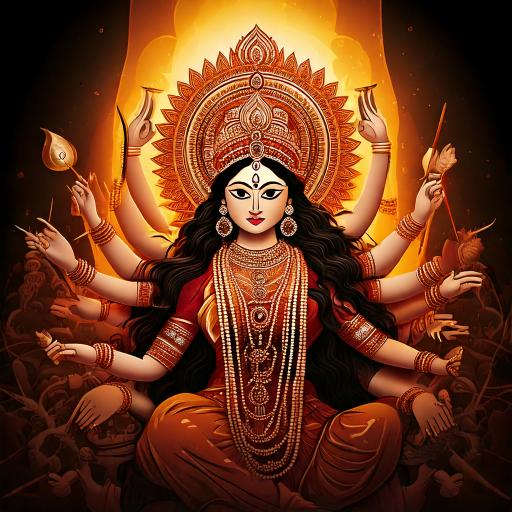 We have all felt overwhelmed by life’s challenges—tired, uncertain, or just out of sync. Haven’t we ? What if the answers to reclaiming the strength and unlocking the success weren’t in self-help books or endless hustle... but rather in something ancient, sacred, and surprisingly relevant?
We have all felt overwhelmed by life’s challenges—tired, uncertain, or just out of sync. Haven’t we ? What if the answers to reclaiming the strength and unlocking the success weren’t in self-help books or endless hustle... but rather in something ancient, sacred, and surprisingly relevant?
Let us introduce you to Durga Puja. The puja isn't just a tradition but also a celebration of divine feminine energy, inner resilience, and cosmic wisdom. Maa Durga’s tale isn’t just a mythological story. Rather it’s a guidebook for awakening the power within you.
Who Is Goddess Durga? A Force Like No Other
 In the vast Hindu pantheon, Goddess Durga represents Shakti. She is the very embodiment of strength, courage, and righteous rage. Maa Durga rides a lion, carrying ten weapons in her many arms, and fearlessly slaying the demon Mahishasura, who represents ignorance, ego, and chaos.
In the vast Hindu pantheon, Goddess Durga represents Shakti. She is the very embodiment of strength, courage, and righteous rage. Maa Durga rides a lion, carrying ten weapons in her many arms, and fearlessly slaying the demon Mahishasura, who represents ignorance, ego, and chaos.
Each weapon in her hand symbolizes a unique skill or value we need in life—determination, compassion, strategy, protection, self-control, and more. Maa Durga is fierce not because she’s angry but because she loves. She fights not for violence, but for balance.
The Legend Behind Durga Puja
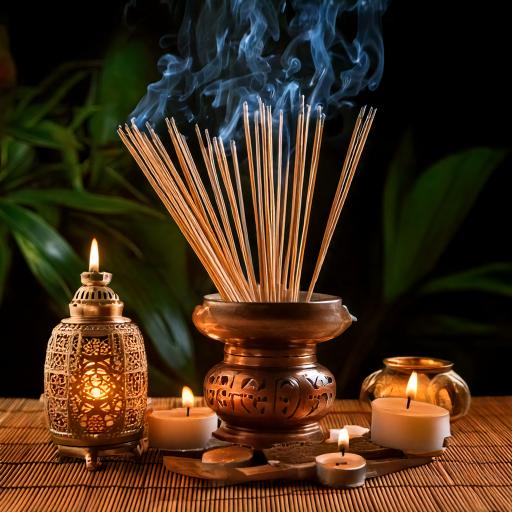 According to mythology, Mahishasura, a powerful demon with the ability to shape-shift, grew arrogant after receiving a boon that no man could kill him. Drunk on his power, he unleashed terror on Earth and heaven alike. The gods, helpless, combined their divine energies—and from that union, Durga was born.
The battle between Durga and Mahishasura lasted nine nights and ten days. On the tenth day, known as Vijayadashami, she triumphed.
What it really means:
Mahishasura represents unchecked ego and darkness.
Durga symbolizes awareness, boundaries, and wisdom.
The story is about slaying the inner demons we all face.
According to mythology, Mahishasura, a powerful demon with the ability to shape-shift, grew arrogant after receiving a boon that no man could kill him. Drunk on his power, he unleashed terror on Earth and heaven alike. The gods, helpless, combined their divine energies—and from that union, Durga was born.
The battle between Durga and Mahishasura lasted nine nights and ten days. On the tenth day, known as Vijayadashami, she triumphed.
What it really means:
Mahishasura represents unchecked ego and darkness.
Durga symbolizes awareness, boundaries, and wisdom.
The story is about slaying the inner demons we all face.
Nine Days, Nine Devis, Nine Life Lessons
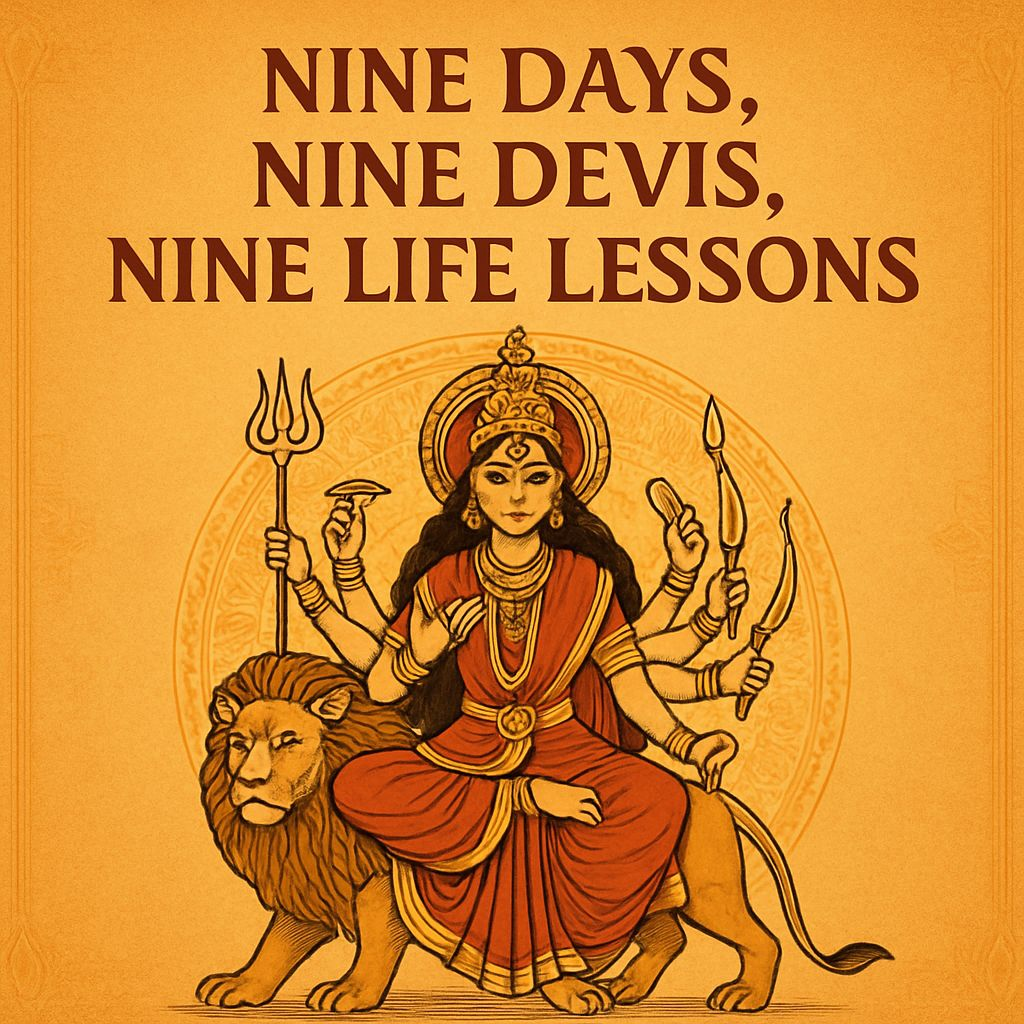
Durga Puja overlaps with Navratri which is the nine nights dedicated to the nine forms of Durga. Each day holds a specific spiritual energy and lesson, Represented by each form of Maa Durga.
Day 1 – Shailaputri
Maa Shailputri is worshipped on the first day of the Navratri. She’s the daughter of the mountains and brings the lesson to Stay grounded. She teaches one to Reconnect with the roots, values, and strength.
Day 2 – Brahmacharini
Day-2 that postulates Embracing discipline is dedicated to goddess Brahmacharini. She is the goddess of meditation and penance, calling us to focus and go within.
Day 3 – Chandraghanta
On the third day of the Navratri, Devi Chandraghanta is worshipped. She wears a half-moon on her forehead and is always battle-ready. Lesson: Balance peace and power
Day 4 – Kushmanda
Kushmanda is the fourth form of Maa Durga who is believed to have created the universe with her smile. Her story and energy elaborates on creating your own light.
Day 5 – Skandamata
Nurturing with strength is the lesson taught by Skandamata. She is the mother of Kartikeya, showing the power of divine motherhood and action.
Day 6 – Katyayani
Maa Katyayani is the Devi who’s celebrated on this day. She's Fierce, warrior-like, and ready to slay what no longer serves you. She teaches everyone to stay fierce and take a stand for yourself.
Day 7 – Kalaratri
Kalratri is the The fiercest form of maa Durga, reminding us to confront our shadow.Don’t fear the dark. That’s the lesson she teaches.
Day 8 – Mahagauri
Lesson: Embrace your grace and clarity. She’s purity itself, showing us that softness is not weakness.
Day 9 – Siddhidatri
You are whole. This is the message that is embraced on the Day-9. Siddhidatri is the form of maa worshiped on this day. She’s The goddess who grants all siddhis (spiritual powers), showing us our own divine potential.
Hidden Meanings Behind Puja Rituals
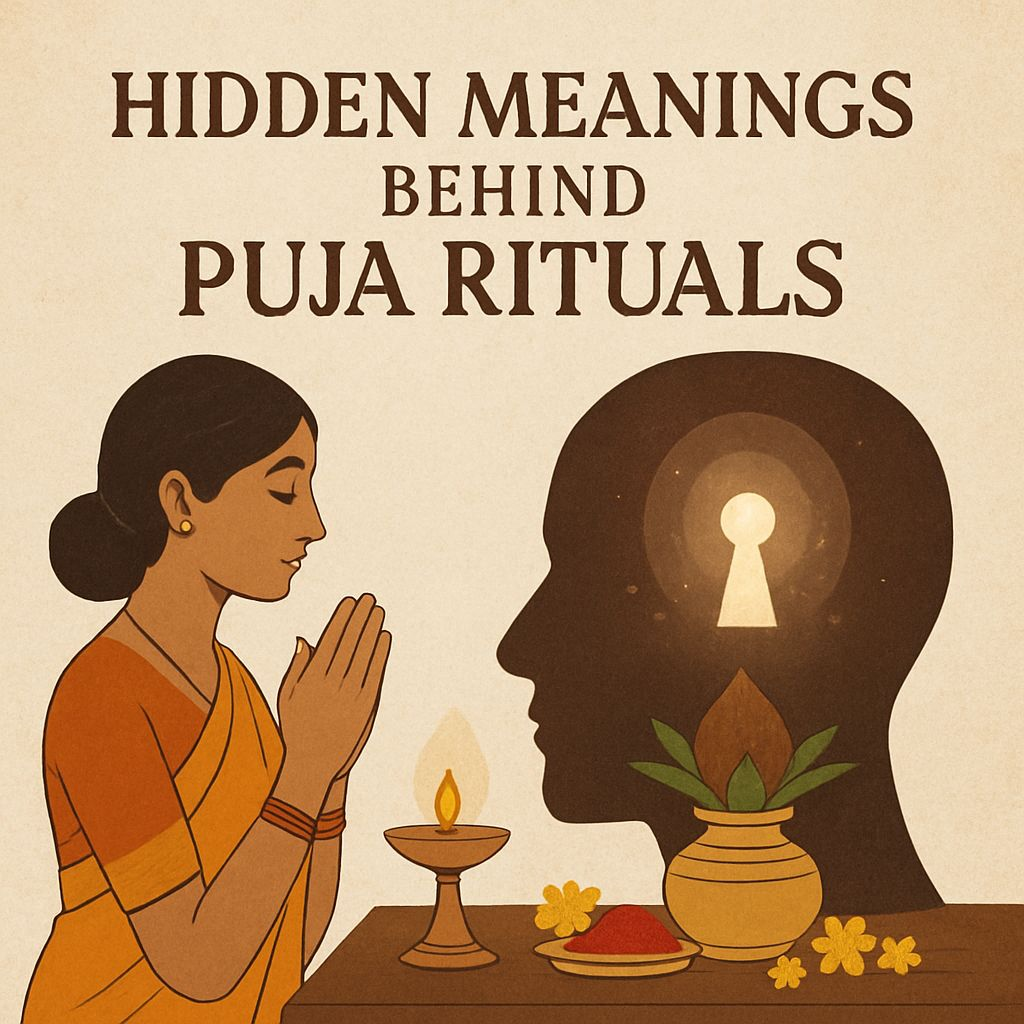
Durga Puja is filled with beautiful rituals—but many don’t know how symbolic they really are.
1. Lighting the Diya (Lamp):
It symbolizes illuminating the inner self, destroying ignorance.
2. Chanting Mantras:
Vibrational tools to calm the mind and connect to higher consciousness. For example: “Ya Devi Sarvabhuteshu Shakti-Rupena Samsthita…” reminds us that divine power resides in all beings.
3. Offering Flowers and Fruits:
It signifies surrender—offering the best parts of our lives to the divine.
4. Fasting:
Not punishment—but a detox of both body and mind. It builds discipline and raises vibration.
5. Sindoor Khela:
A celebration of feminine power, especially the sacred bond between women. It's often misunderstood—its roots lie in honoring Durga's strength before she leaves Earth.
Durga Is Within You: Awaken the Feminine Divine

Durga isn't just "out there." She’s within every one of us—regardless of gender. She is your:
- Voice when you're silenced
- Courage when you're scared
- Compassion when you're hurt
- Clarity when you're lost She’s a reminder that feminine energy isn’t passive—it’s powerful. In a world that celebrates aggression, Durga teaches aligned action with love.
How to Attract Success During Durga Puja
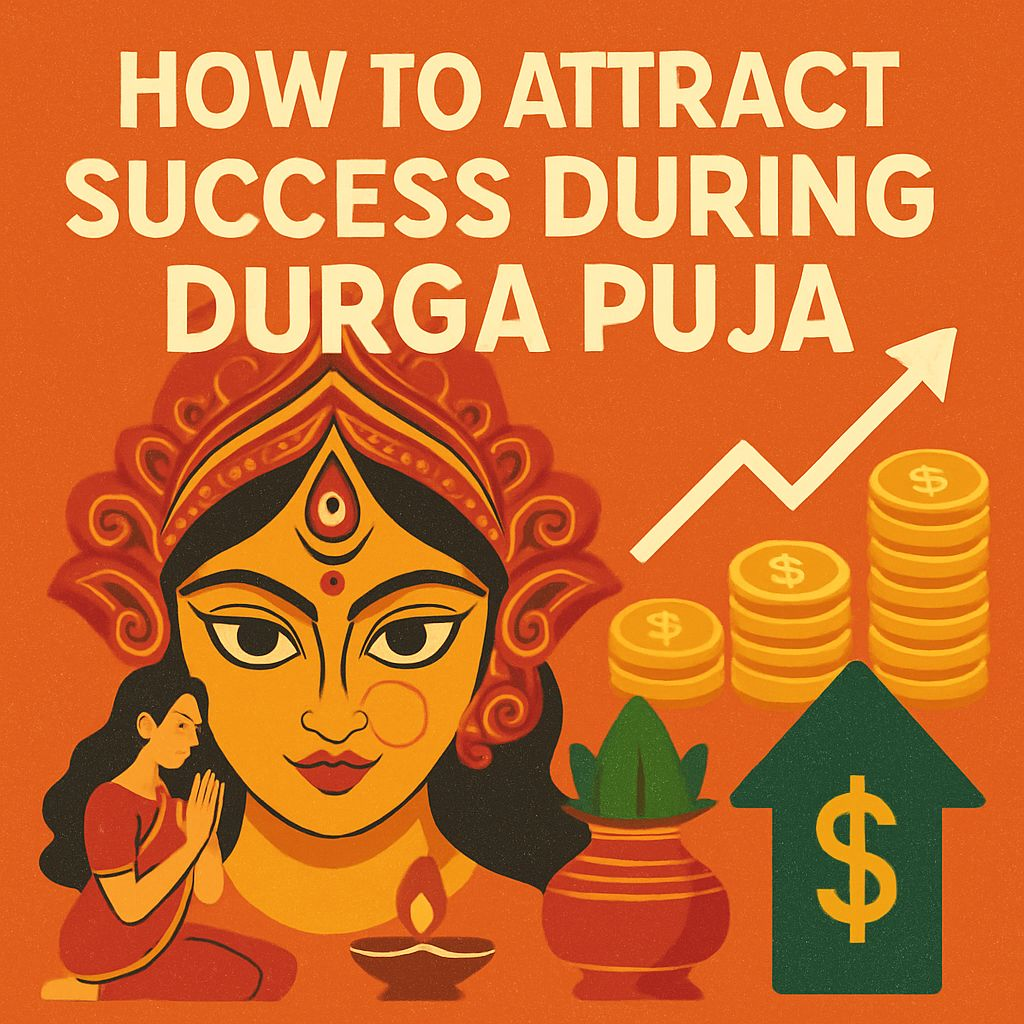 Durga Puja is a powerful time for manifestation and intention-setting. Here’s how to align your energy:
Durga Puja is a powerful time for manifestation and intention-setting. Here’s how to align your energy:
Affirmations to Chant Daily
- “I am powerful. I am protected. I am guided.”
- “I release fear and welcome success.”
- “Durga Maa, bless me with strength and wisdom.”
Colors Matter
Each Navratri day has an associated color. Wearing them is believed to invite that energy into your aura.
Best Time to Manifest:
During Ashtami (8th day) or Navami (9th), after a simple prayer and meditation, write your goals on a red paper and offer it at Durga’s feet or under her photo.
Why the World Still Needs Durga Today
In today’s world—full of anxiety, burnout, emotional disconnection—Durga’s energy is more needed than ever. Her message?
Don’t bow down to fear. Don’t drown in the noise. Stand tall. Speak truth. Protect your peace. Be fierce in your faith.
Whether you’re dealing with heartbreak, career stagnation, self-doubt, or just exhaustion, Durga offers tools to rise again—and rise stronger.
Final Thoughts: The Real Victory of Durga Puja
Durga Puja is not just about defeating a demon on the outside—it's about defeating the demons inside: fear, comparison, laziness, overthinking, jealousy.
Victory (Vijaya) is not just about winning… it's about becoming whole again.
So the next time you see a pandal, hear the dhak, or feel the scent of incense in the air, remember: Durga isn’t just coming into your city. She’s awakening in your soul.
May her power guide you, protect you, and remind you— You were never weak.
You were always divine.




